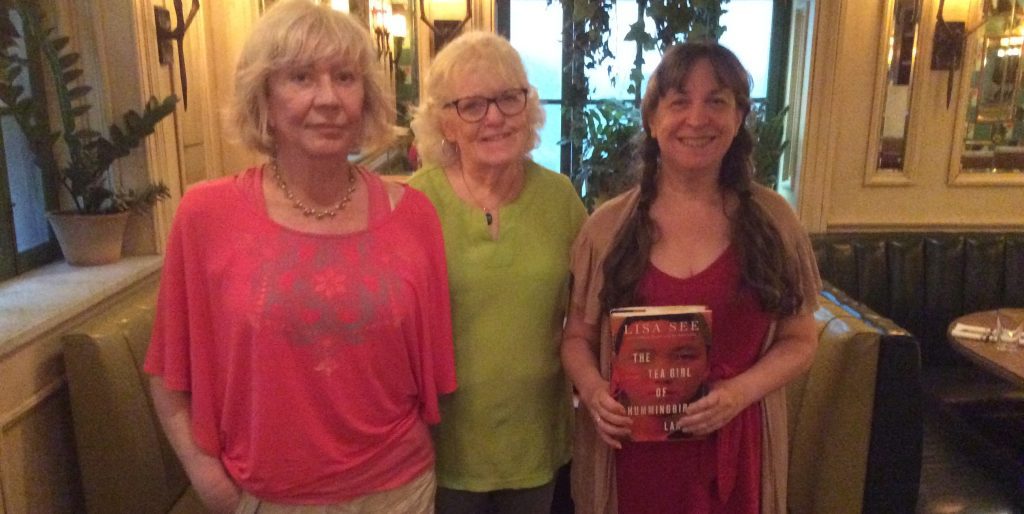
Alice Weolwska, Eileen Donovan, and Jill Wisoff holding a copy of The Tea Girl of Hummingbird Lane
 Just from the title — The Tea Girl of Hummingbird Lane — you get a sense that this book is about a young girl working on a tea plantation. But if you look at the cover closer, you can see the intensity in the Girl’s eyes. You can intuit a deeper message hidden beneath the surface. This summer, WNBA’s book club discussed the social and political views that drove character development in Lisa See’s historical novel.
Just from the title — The Tea Girl of Hummingbird Lane — you get a sense that this book is about a young girl working on a tea plantation. But if you look at the cover closer, you can see the intensity in the Girl’s eyes. You can intuit a deeper message hidden beneath the surface. This summer, WNBA’s book club discussed the social and political views that drove character development in Lisa See’s historical novel.
A key social issue that stood out was the history of the Cultural Revolution in China. Living in The Age of the Internet, it’s difficult to immerse ourselves in a world where education is sparse. Where outside communication is so infrequent that we hardly know of anything happening five miles beyond our homes. Yet that is the 1990s world of the novel, and it questions how much China cared for its minority peasants. Although China’s Cultural Revolution ended in the 1970s, the book’s protagonist Li-yan grew up in a mountain tribe that had very little interaction with China’s Han Majority. This meant that Li-yan was cut off from the outside world, and it wasn’t until she could go out into the world herself that she could form any conclusions about both it and her own life.
The brunch goers also discussed how good characters and good character development can make or break a story. So it’s a risky move – introducing characters early, just to remove them from the narrative until the end. These characters often play the role of the “glue” in a story, and they can act as a reset — allowing readers to see how relationship dynamics in the novel have evolved. While this creates an interesting read, it can also create a disconnect. In the middle of the book, you might begin to forget about the character. You might wonder why they were even introduced. Has the author done this intentionally? Is it a way of emphasizing characters with a different point of view?

“The Ladies Who Brunch” will meet next on October 6th. They’ll be discussingI’ll See YouinParis by Michelle Gable — a novel about American women searching for their fathers and husbands. To join them, you can register here!
Discussion notes for The Tea Girl of Hummingbird Lane were provided by group moderator Jill Wisoff.

Rachel Slaiman is a published freelance writer of several articles in both print and online as well an editor and copy editor of aspiring author’s manuscripts. She is currently the co-recording secretary for the WNBA and co-chair for the Brooklyn Book Festival. Rachel holds a B.A. in Communications and a M.S. from Pace University. In her spare time, she enjoys reading and writing short stories.





Love your blog…though I don’t remember exactly discussing characters removed from the story and then reintroduced at the end as not being effective…this is a somewhat picaresque coming-of-age story where, yes, characters she met as a child come into play later in the novel….I thought See did a good job reintroducing these characters clearly…this aspect of the novel was very 19th C. in structure…and yes sometimes it may feel almost unbelievable these “coincidences” of people coming into play as adults, but there’s a circularity, a tying of threads together, that, though not modern, was done well in this novel in that tradition, and at least for me, felt very satisfying.